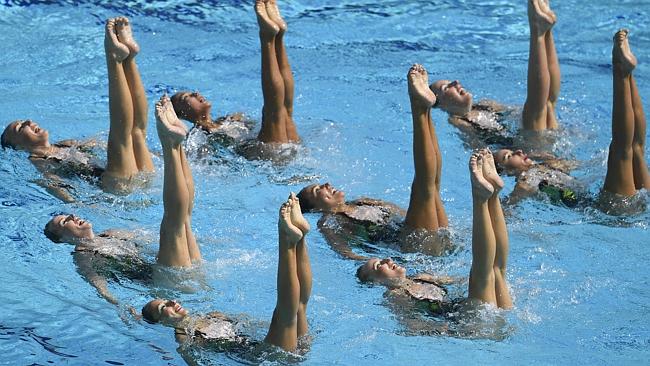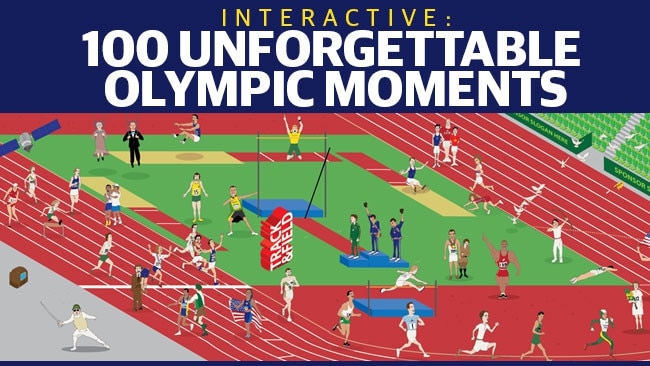Australian synchronised swimmers finish second in rivalry with Egypt as improvement continues
AUSTRALIA isn’t exactly at the pointy end of world synchro domination. That would be Russia, China and Japan but our battle with the Egyptians is pretty fierce.
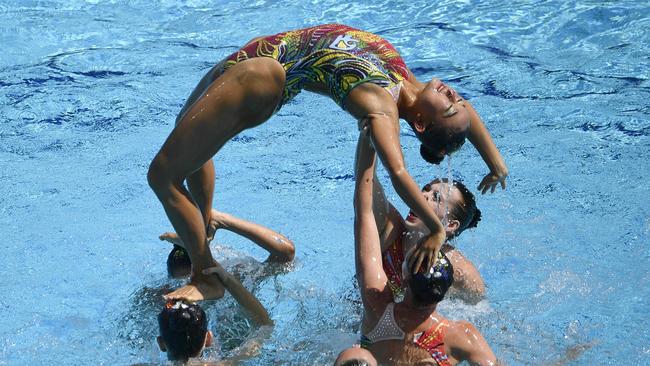
AUSTRALIA’S synchronised swimming team finished second in their event at the Olympics on Friday night.
That event being the one between them and Egypt.
Australia isn’t exactly at the pointy end of world synchro domination. That would be Russia, China and Japan.
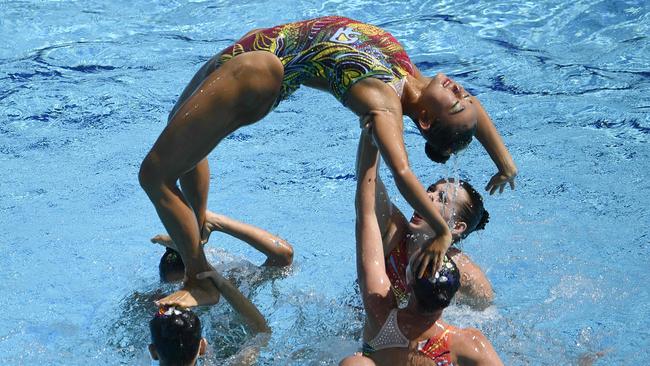
But neither is Egypt. In fact, for the past two Olympics them and us have been battling it out for seventh and eighth place (or as the Russian coach might call it, last and second last) in the team event.
It has led to a strong, if friendly, rivalry and a virtual two-team competition within the main event.
The Egyptians finished on top of us in London and now, four years later in Rio … well, they did it again, but the Aussies gave it a red hot go and, as team captain Bianca Hammett said, “we’re getting closer”.
Personally, I thought we had them. Admittedly I’ve covered a lot more rugby matches than I have synchro finals, but I thought Egypt’s number seven was a bit slow to the breakdown.
And as for their eggbeaters (that’s where they move their legs round and round under the water so the upper half remains high and dry on the surface) well, I don’t like to be critical but …
The Aussies, on the other hand; let’s just say if they were staying out at the media village the scrambled eggs served up every morning would be light and fluffy instead of stiff and dry.
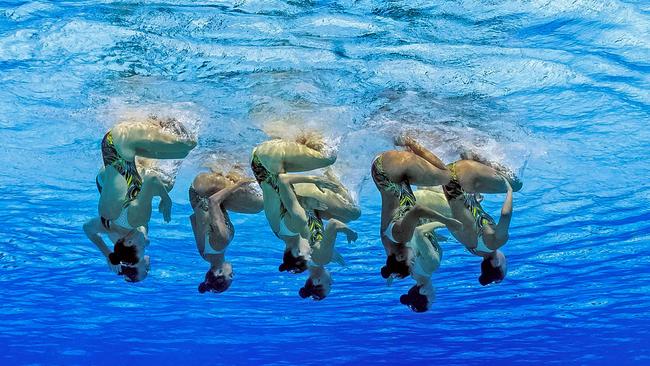
The team event is a two-part competition, with the technical routine on day one and the free routine 24 hours later. The scores for each are added together to determine placings. As the name would imply the technical routine requires teams to perform a set number of specified moves which are judged on various technical points.
The free routine is judged on three categories: artistic, impression and difficulty. Given what our girls went through just to get to Rio I thought they’d be specials in the last one.
Hammett arrived on crutches after breaking her toe in training. Teammate Amie Thompson had a broken nose. Others were sporting sprains, cuts and bruises, and all have suffered what respected swimming website SwimSwam.com calls “the dark side of synchronised swimming” – concussion.
And that on top of apathy and derision from sections of the Australian public.
Not that they were lacking vocal support at Rio’s Maria Lenk Aquatic Centre. The Aussie cheer squad was in full voice. Four Australian flags and a boxing kangaroo floated proudly in the meagre breeze alongside those of Japan, China and Russia, of course, Brazil.

The Australians chose an indigenous theme for their routine, with the didgeridoo-based backing music a compilation of excerpts from the soundtracks of the movies Australia and Crocodile Dundee, and the TV show Outback Survivor. An Aboriginal elder coached them on the correct way to walk like an emu for their entrance, and moves were devised to portray kookaburra, spiders and wedge-tail eagle.
Their supporters up in the stand loved it. One bloke in a green and gold singlet danced along to every move, swishing the Australian flag draped over his shoulders in time to the music, as if he was drying his back with a towel on Bondi beach.
Their ballet legs, throws, spins and the aforementioned eggbeaters, were all crisp and inventive and the athletes were justifiably proud of their performance.
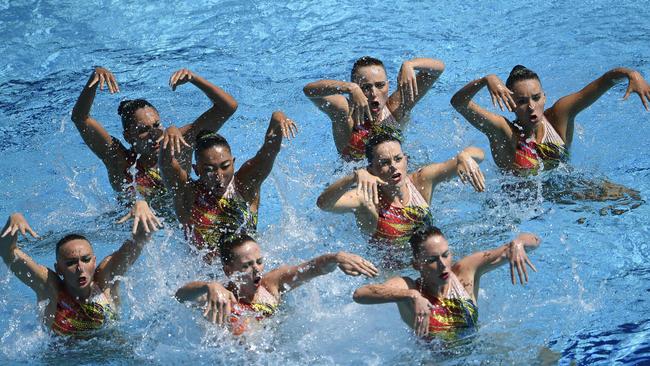
Not that it melted the hearts of the 15 blue-blazered judges, who marched in step to their positions, sat and took off their straw hats in perfect unison. For these people synchronisation isn’t a word, it’s a way of life.
For Hammett, who was swimming her last event after 18 years in the sport, it was a happy-sad occasion. Happy, because the team performed well and, as she said, “lived their Olympic dream”, sad because she has had a ball and will miss it.
“It’s tough sometimes but none of us would change a thing,” she said. “People in Australia don’t think of it as a sport like they do in other countries, but it’s getting better. I think we are getting more respect for what we do.”
If anyone in Australia doubts the skill or strength required to reach the top in the sport, they needed only watch the top teams battle it out for gold.
The Russians swam to the type of heavy, soaring music found in Vodka ads and James Bond movies that makes you think of tractors and women in head scarves holding pitchforks.
And they performed like that too. In my notebook when the Australians were in the pool I wrote “clever”. For the Russians I wrote, “dead-set scary”.
The Ukrainians, despite the blue angel wings on their cozzies, were more of the same but not as good. Sort of a Russia Lite, and the Chinese and Japanese were big on acrobatics, not so big on power and precision.
The judges saw it Russian one, China two, Japan three.
And for Australia - Hammett, Thompson, Hannah Cross, Dannielle Kettlewell, Emily Rogers, Nikita Pablo, Rose Stackpole and Deborah Tsai - a gold star for effort.
Originally published as Australian synchronised swimmers finish second in rivalry with Egypt as improvement continues

